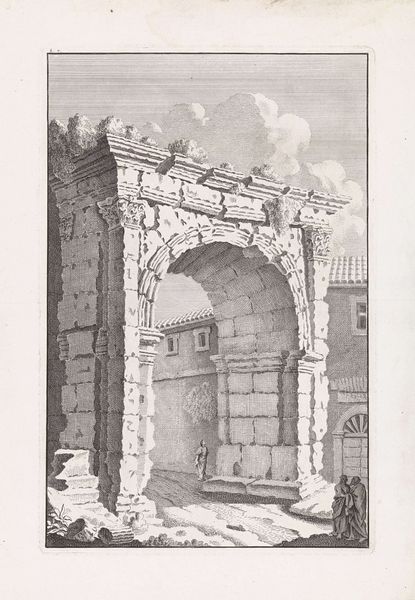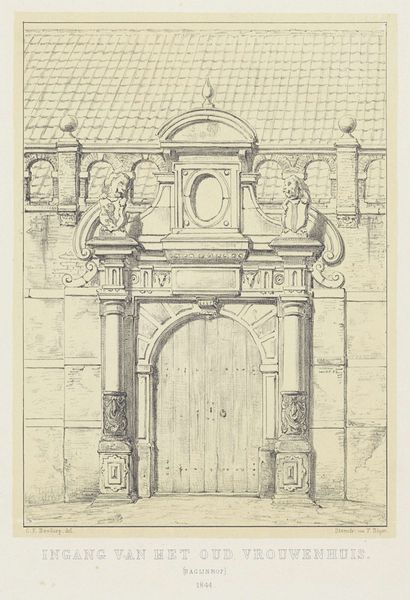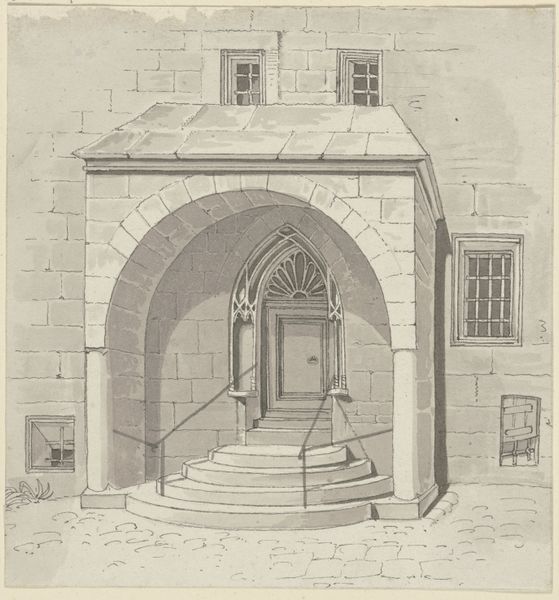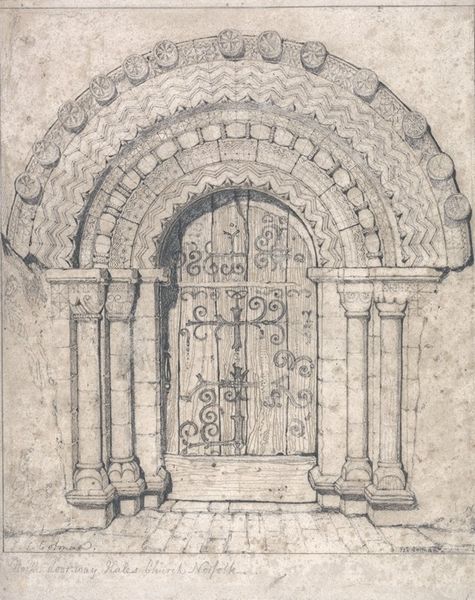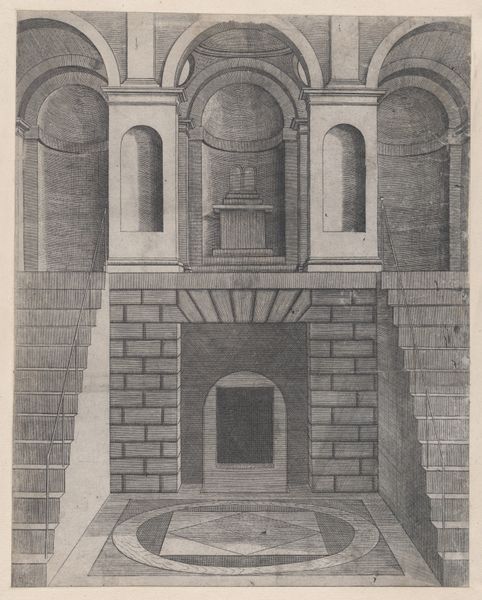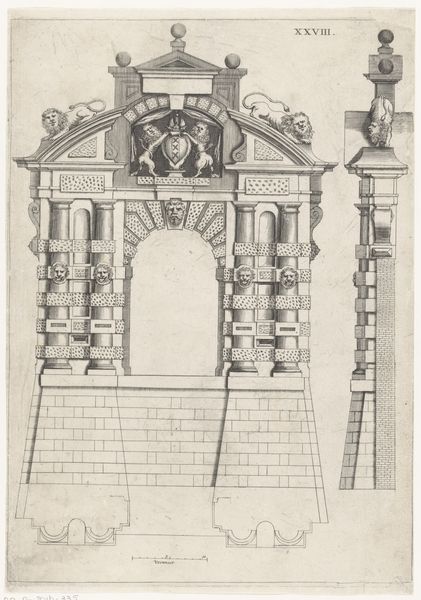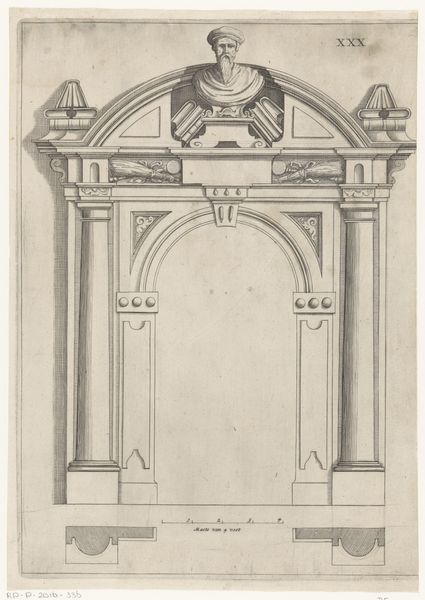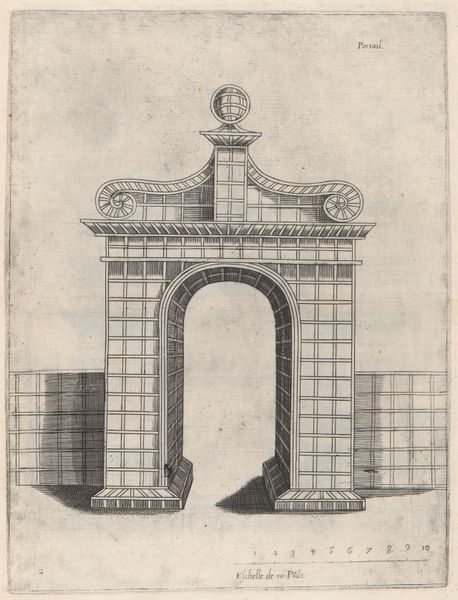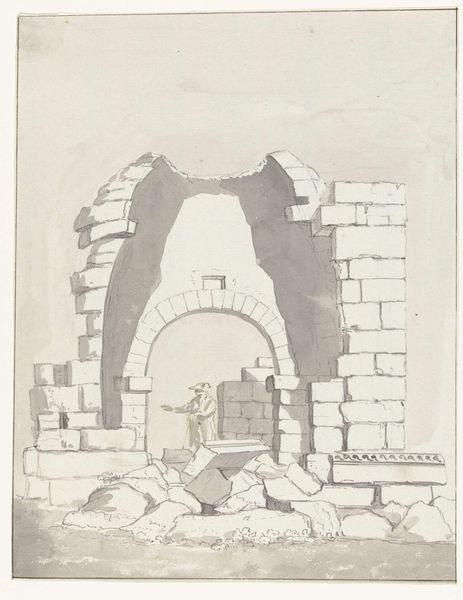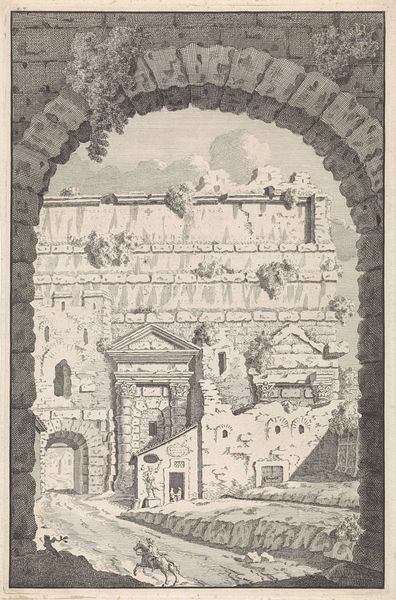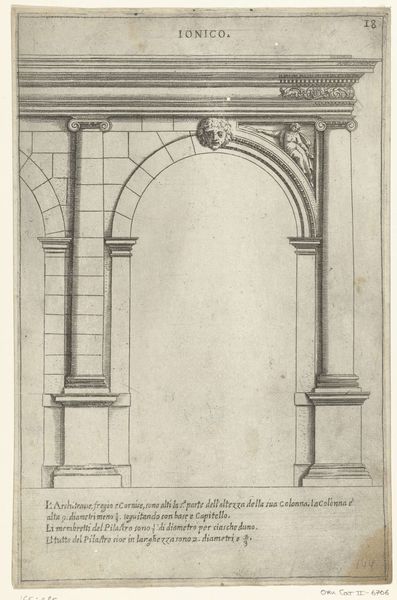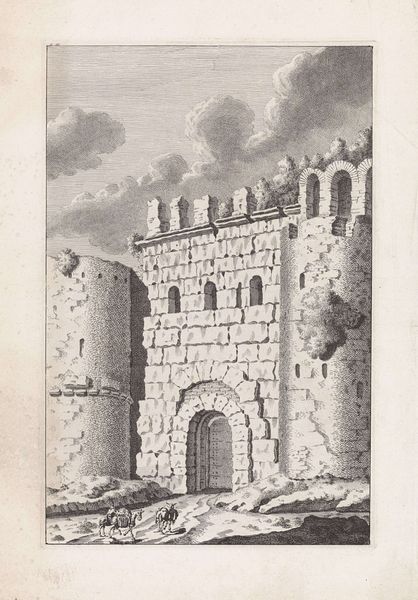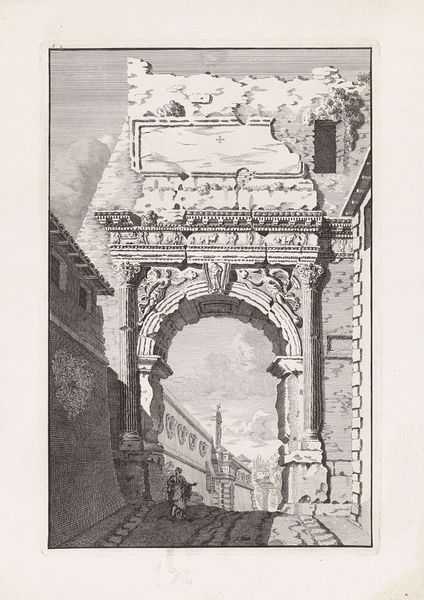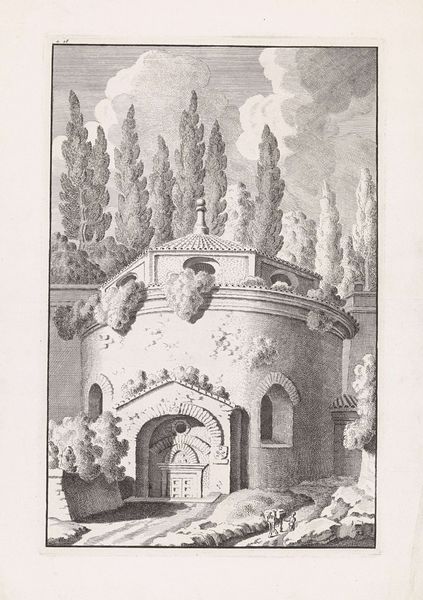
drawing, print, engraving, architecture
#
drawing
#
neoclacissism
# print
#
landscape
#
classical-realism
#
geometric
#
engraving
#
architecture
Dimensions: height 205 mm, width 158 mm
Copyright: Rijks Museum: Open Domain
Curator: Welcome. Here we have a work titled "Monumentaal stenen tuinprieel met nis," or "Monumental Stone Garden Bower with Niche," created between 1770 and 1824 by Harmanus Henke. It’s an engraving, capturing architectural design in that period. What is your initial reading of the work? Editor: Stark. The drawing is meticulously precise, but that only emphasizes the weight of the stone. It feels austere, almost oppressive despite the intended purpose of leisure. The geometric arrangement is interesting; all rectangles and spheres contrasted by the curve of the archway. Curator: Yes, the geometry certainly echoes the neoclassical obsession with order, but the encroaching vines complicate that. They offer a counter-narrative of nature reclaiming what is inherently artificial, reminding me of time's passage. Notice also the carved mask. That image might represent Pan, a playful yet often frightening woodland deity. Editor: Precisely! That dissonance—the planned versus the organic—creates tension. The line work, while accurate, has a slight unevenness to it as well; perhaps deliberate? The artist allows subtle flaws within rigid structure. It keeps the drawing from feeling sterile. The light too, isn’t uniformly distributed. Curator: Light and shadow emphasize the emotional dimension further; that tension becomes a meditation on humanity’s attempts to control its surroundings. These garden structures were designed to inspire particular emotional states—melancholy being a favorite. This wasn’t just about pretty scenery, but also internal, psychological architecture. The symbol-laden image reminds the viewers of mortality even in idealized settings. Editor: A valid interpretation. Viewing it purely as form though, I find a controlled dynamism—static mass imbued with quiet energy. The texture is rendered effectively through engraving; you can almost feel the coolness of the stone. I particularly find interest in the way the vines are placed within the structure, carefully, but disrupting it to provide contrast within an otherwised rigid pattern. Curator: So ultimately, Harmanus Henke provides us not just a depiction of architecture, but an intricate layering of philosophical and emotional signifiers. Editor: Absolutely, whether examining the calculated interplay of lines or decoding its symbolic program, this print provides fertile ground for aesthetic inquiry.
Comments
No comments
Be the first to comment and join the conversation on the ultimate creative platform.
